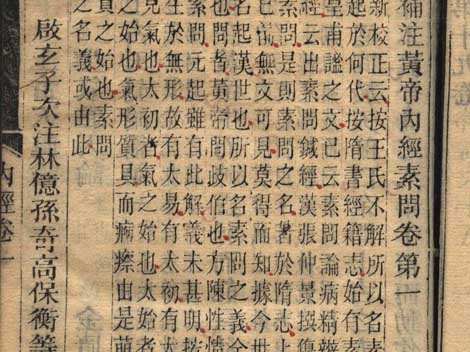
In terms of English translations, Ilza Veith’s 1960s version is written in a straightforward style and has explanatory footnotes. More recent versions by contemporary practitioners of Chinese medicine, Maoshing Ti and Zhu Ming, are also available; these are more readable and truer to the spirit of traditional Chinese medicine.
Compiled roughly two thousand years ago, this great work forms the theoretical basis of TCM. As TCM's history developed over the millennia, nearly all significant medical works benefited from the enlightenment of this unparalleled book. Covering not only medicine but also philosophy, sociology, anthropology, military strategy, mathematics, astronomy, meteorology, ecology, The Medical Classic of the Yellow Emperor demonstrates that even in ancient times, people accomplished scientific achievements that are applicable, relevant, and innovative even in modern times. The world-famous medical masters and saints in the history of TCM such as Zhang Zhongjing, Hua Tuo, Sun Simiao and Li Shizhen, who lived hundreds to thousands years ago, are greatly enlightened by the academic thoughts of The Medical Classic of the Yellow Emperor. All of them researched into this great book deeply and mastered the essence of this book and thus became the most famous practitioners of TCM in Chinese history.
The first text, the Suwen, also known as Basic Questions, covers the theoretical foundation of Chinese Medicine and its diagnostic methods. The second and generally less referred-to text, the Lingshu, discusses acupuncture therapy in great detail. Collectively, these two texts are known as the Neijing or Huangdi Neijing. In practice, however, the title Neijing often refers only to the more influential Suwen. Two other texts also carried the prefix Huangdi neijing in their titles: the Mingtang and the Taisu , both of which have survived only partially.
We Recommend:
